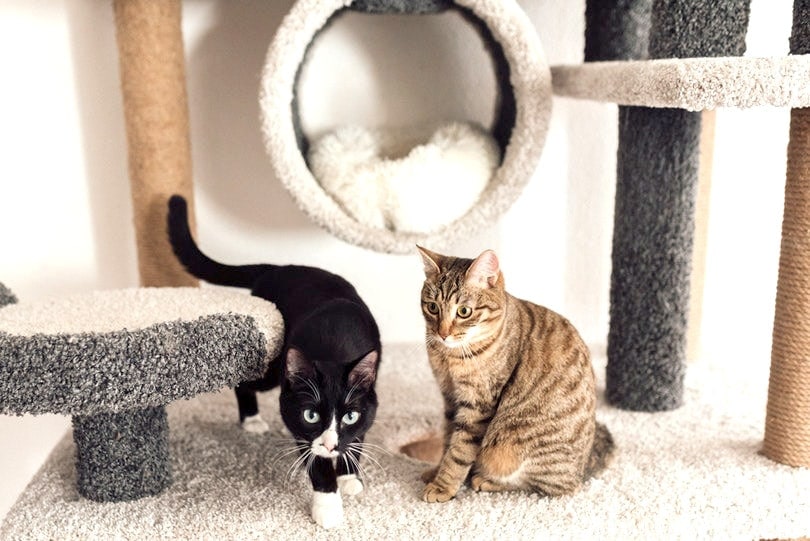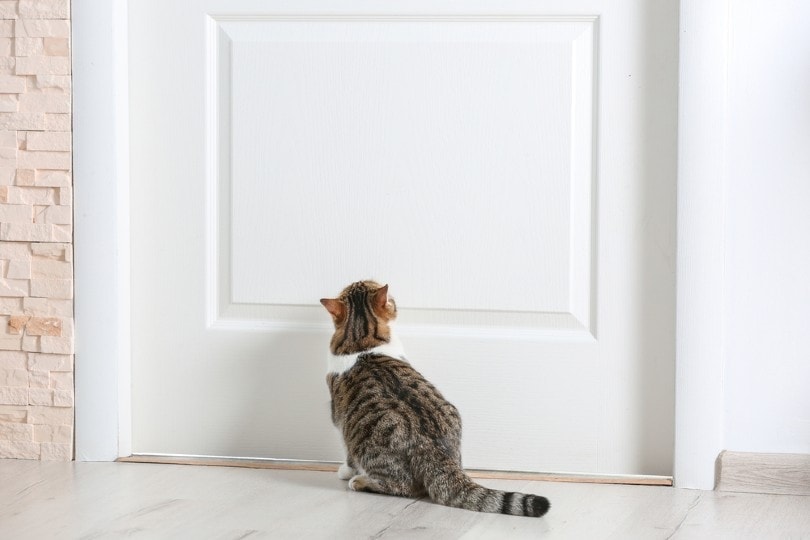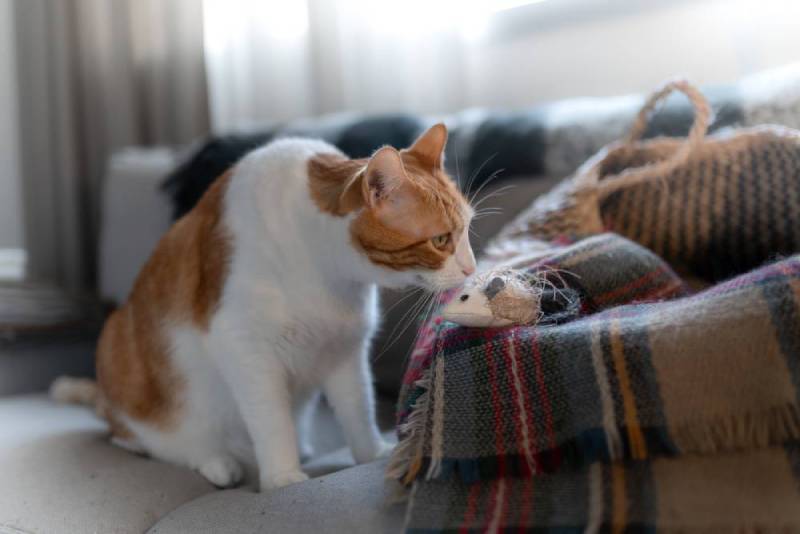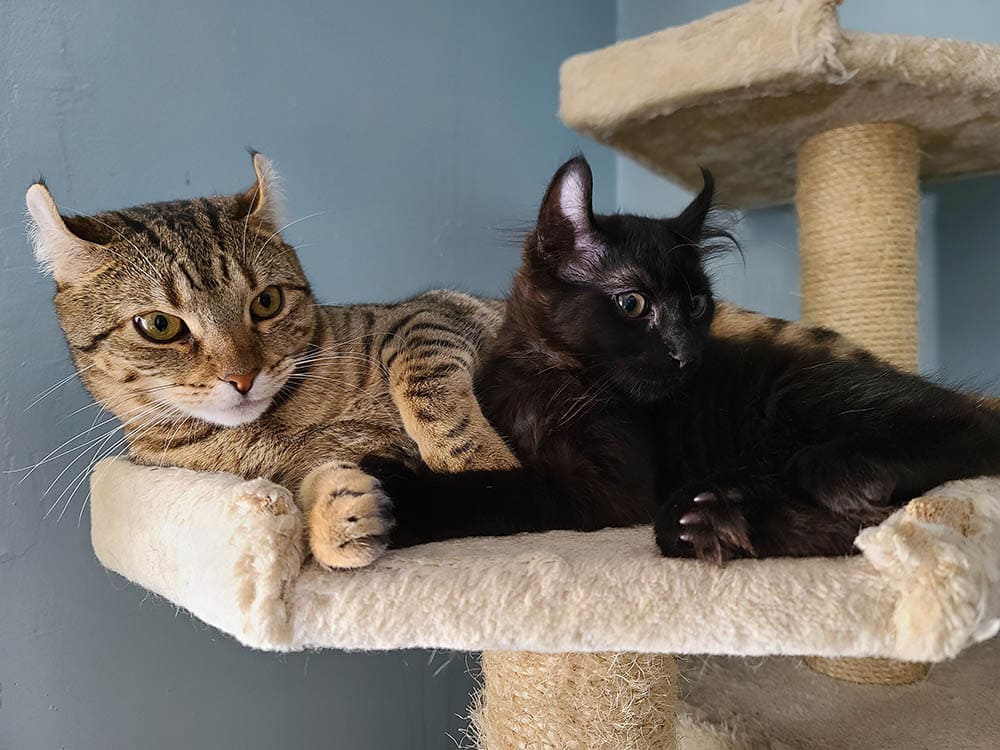How to Introduce Cats to Each Other: 10 Vet-Approved Steps for Success

By Misty Layne
Updated on

It’s always a happy and exciting time when you’re adopting a new kitty, but if you currently have a cat in your home, you might be curious about how you should introduce the two. Some cats don’t always take so well to new additions to the household, whether because it’s a disruption to their regular routine or because they consider the home their territory, making the new kitty an intruder. But despite the fact that it can be a bit challenging introducing cats to each other, there are some ways to make the transition easier for everyone.
With the following ten expert tips, you should have far fewer problems getting your current cat to be accepting (or at least not downright mean) to your new kitty. Here’s what you need to know.
The 10 Expert Tips on How to Introduce Cats to Each Other
1. Keep Felines Separated at First
When introducing cats to one another, the last thing to do is to throw them together and hope for the best Instead, you’ll want to keep your felines separate at first. Give the new cat its own space that contains food, water, toys, and a litter box, and keep the door closed to the room the new kitty is in, so the current one can’t see it. This lets your new cat get acclimated to its new home and gives both cats a chance to get used to the animal nearby. You should only need to separate your pets for a few days, though.

2. Exchange Scents
While your cats are in separate areas, start letting them exchange scents. Felines have an excellent sense of smell, so both cats will already be alert to the other in the home. But by swapping toys or blankets between the cats, you’ll allow them to get used to each other’s scent. One great way of doing this is by rubbing a blanket or towel on your current cat, then leaving that item in the room with your new cat (and vice versa). When you leave the item in the room with the other kitty, put treats down on it to encourage them to sniff it; this will help your cats establish a positive association with the other’s scent.
3. Let Cats Explore Each Other’s Area
Once your felines have gotten a bit more used to the smell of one another, it’s time to let them explore each other’s spaces. The cats will still be separated—don’t put them in the same area together yet! Just switch the areas they’re in. This way, each kitty can explore to their heart’s content and get a better handle on their new companion. You can even allow the cats to sniff each other through the closed door of the room if there are no signs of distress while they do so. However, if either feline shows signs of being upset during this exploration, it’s best to go back to scent exchanges before trying this again.

4. Slowly Begin Introductions
After exploration, it’s time to slowly (very slowly!) begin introducing your cats to each other. You still want to keep them physically separated for this part, so a good option is having them be on opposite sides of a gated doorway. This way, the cats can see each other but won’t be able to reach each other (provided you have a tall enough gate). Or you can put them on opposite sides of a glass or screen door. As long as they’re able to see but not meet each other, all should be well. But again, if either cat seems particularly distressed, you’ll want to go back to exploration before trying introductions again.
5. Keep Introductions Short and Sweet
Once your felines have gotten used to seeing and smelling each other, it’s time for a real introduction! The key here, though, is to keep these first physical interactions short and sweet so neither cat is overwhelmed; think 5–10 minutes a couple of times a day. Also, never force interactions; if your cats aren’t approaching each other, don’t push them. Let them get there in their own time.

6. Supervision
Another vital aspect of these first interactions is that they should always be supervised by you! These physical introductions may not go well, and if one cat tries to attack the other, you want to be there to stop it. Superv ision will likely only be required for the first week or so (provided your cats don’t seem to dislike each other intently). And you can gradually lengthen the time of these meetings over that week as they become more accustomed to one another.
7. Unsupervised Interaction
If your felines have been able to be in the same room together for the past week without signs of fighting or aggression, then congratulations! They’re ready to move to unsupervised interactions. Again, you’ll want to leave your kitties alone together only for short periods in the beginning and you might want to set up a camera to keep an eye on them when you’re not in the room, at least at first. But if the two cats are getting along, you can increase the time you leave them alone together. Eventually, they’ll be fine on their own at any point, for any length of time!

8. Have Blockers at the Ready
When you start physical introductions, having sight blockers ready is a good idea. These are simply large objects that can block a cat’s sight, so they aren’t able to see the other cat (a large piece of cardboard, for example). Hopefully, you won’t need them, but sight blockers can be handy if you notice one of your cats raring for a fight or looking a bit scared.
Blockers are also useful in blocking any spaces a scared cat could run away to, like under the sofa. If your cats are together but not getting along and one runs into a small space to hide, the other could follow, which means a fight happening in an area you can’t easily access. By blocking off these places, you can ensure if a cat runs, it will run somewhere you can get to it.
9. Keep a Blanket on Hand
If you don’t have anything that would be suitable to block a cat’s vision if needed, keeping a blanket on hand is wise. Blankets are simple to use in a pinch—just toss it over one of the cats, then remove them from the room. This way, vision is blocked, and you don’t accidentally get scratched by an upset kitty.

10. Use Distractions
Probably the quickest way to prevent a kitty tussle during first introductions is a distraction. If you notice one of your felines getting a bit puffed up, distract it with a random noise or just a hand clap. Whatever works to get the attention off the second cat.
Final Thoughts
Getting a new cat is always amazing, but if you have a cat currently living in your home, it might not be as exciting for the new pet in the house. Introducing cats to each other in a safe manner that eases tension will take a little time, but with these ten tips, it shouldn’t be long before your cats are friends. Just keep in mind that if one tip isn’t working, you can always go back to one you previously used to allow your kitties more time to get used to one another!
Featured Image Credit: Arina Krasnikova, Pexels












